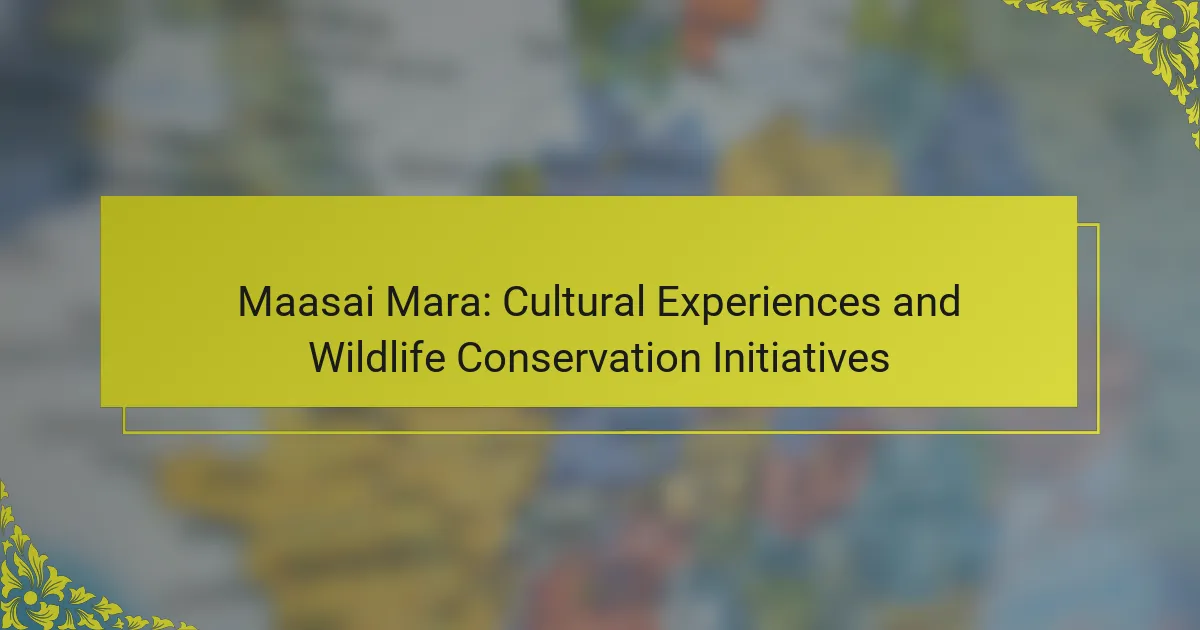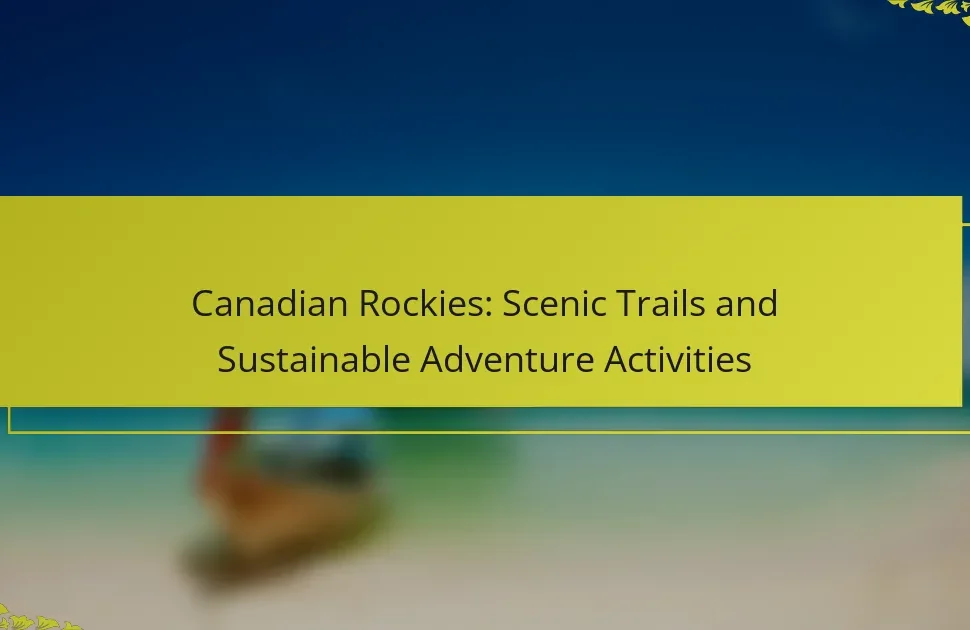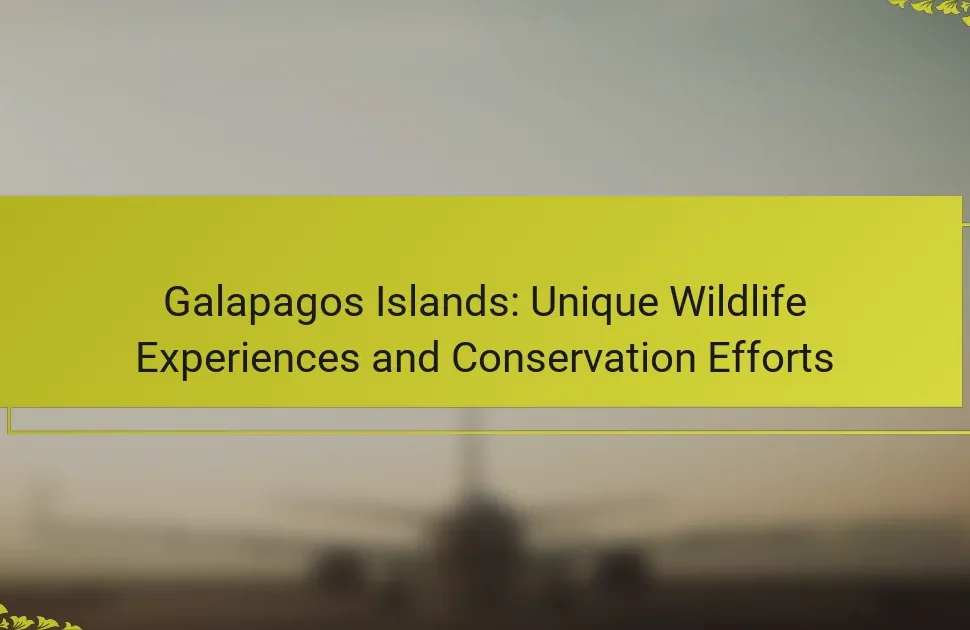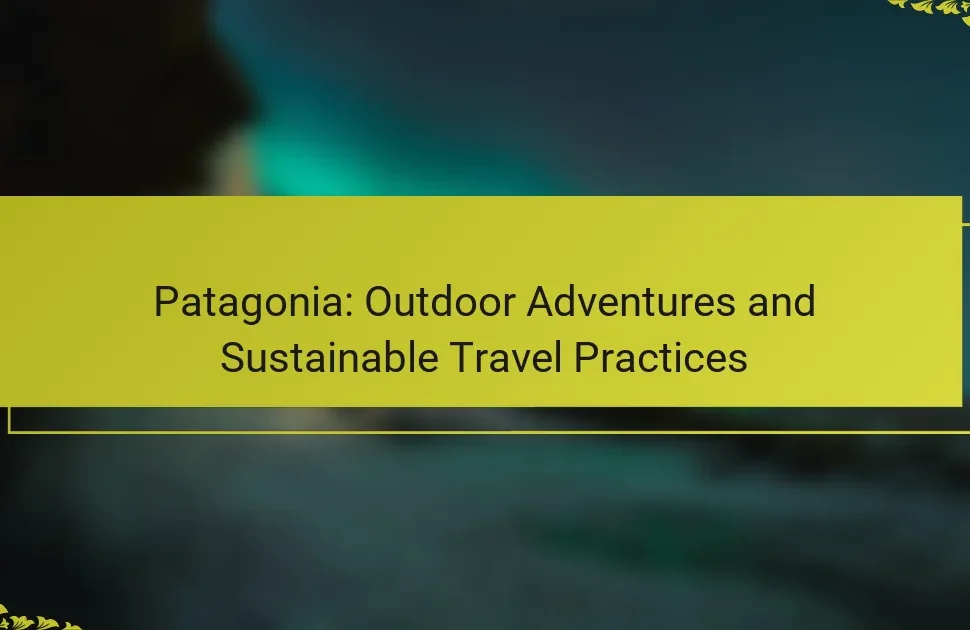Maasai Mara offers unique cultural experiences and vital wildlife conservation initiatives. Engage with Maasai tribes through traditional ceremonies and community visits. Discover the region’s rich biodiversity and learn about sustainable tourism practices. Explore the challenges facing conservation efforts and how visitors can contribute to preserving this vital ecosystem.
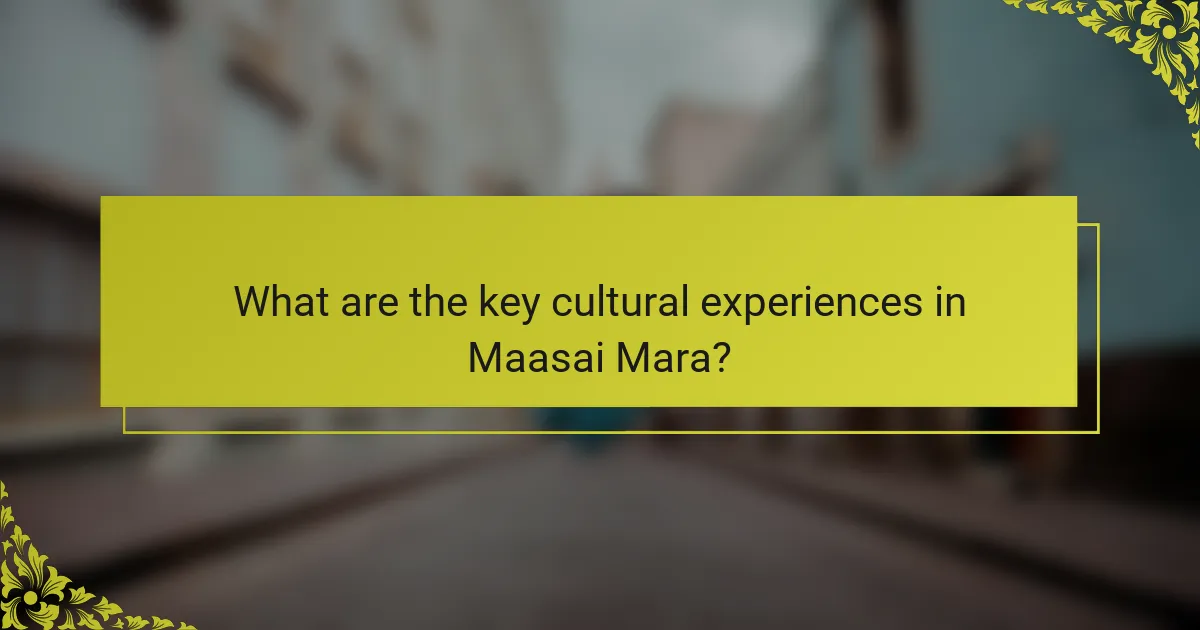
What are the key cultural experiences in Maasai Mara?
The key cultural experiences in Maasai Mara include traditional Maasai ceremonies, community visits, and cultural performances. Visitors can engage with Maasai tribes, learn about their customs, and participate in rituals. These experiences foster understanding of their rich heritage and promote wildlife conservation initiatives. For example, the Maasai’s coexistence with wildlife highlights their unique attribute of sustainable land management. Engaging with the Maasai enhances cultural appreciation while supporting conservation efforts.
How do local traditions influence visitor interactions?
Local traditions significantly enhance visitor interactions in Maasai Mara by fostering authentic cultural exchanges. Visitors engage with the Maasai people through traditional ceremonies, storytelling, and art, creating memorable experiences. These interactions promote mutual respect and understanding, enriching the visitor’s journey while supporting local conservation efforts. For example, participating in a Maasai dance not only entertains but also educates visitors about the community’s values and beliefs, deepening connections to the region’s wildlife conservation initiatives.
Which festivals and events showcase Maasai heritage?
The Maasai Mara hosts several festivals and events that celebrate Maasai heritage. Notable examples include the Enkipaata ceremony, which marks the initiation of young warriors, and the Maasai Olympics, promoting wildlife conservation through sports. Additionally, the Maasai Cultural Festival showcases traditional music, dance, and crafts, fostering cultural exchange and awareness. These events highlight the Maasai’s rich traditions while supporting conservation efforts in the region.
What role do storytelling and art play in Maasai culture?
Storytelling and art are central to Maasai culture, serving as vital tools for preserving history and identity. Through oral traditions, the Maasai convey important values and lessons, while visual art, such as beadwork and painting, reflects their connection to nature and spirituality. These cultural expressions foster community cohesion and pass down knowledge across generations. Additionally, art often plays a role in social rituals, enhancing the significance of communal gatherings and celebrations.
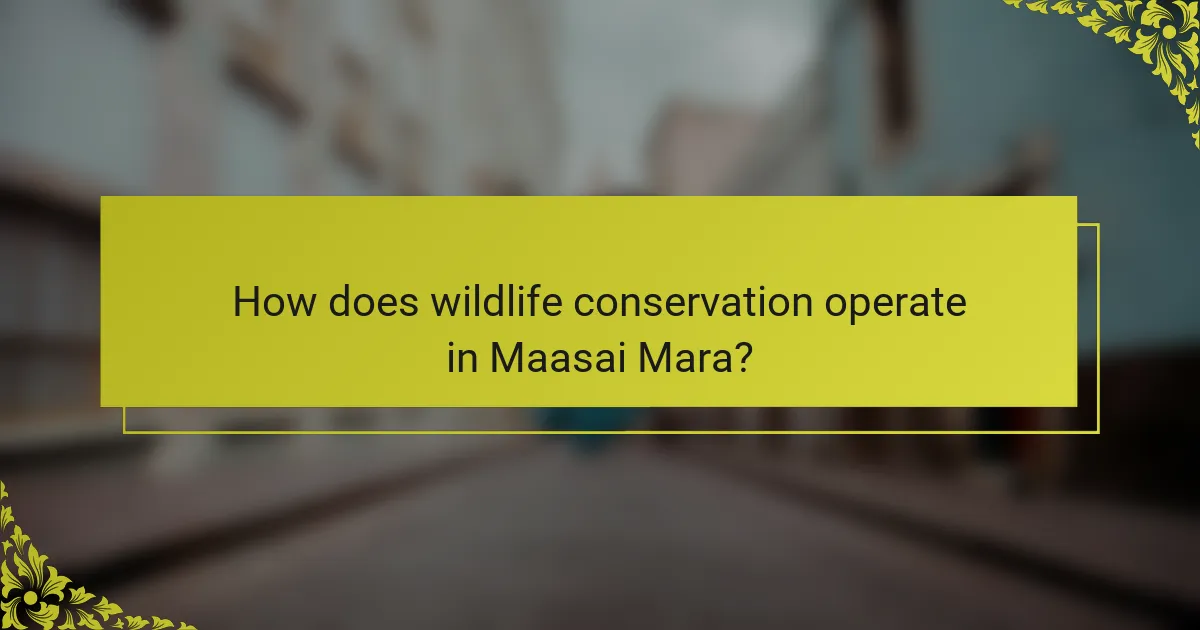
How does wildlife conservation operate in Maasai Mara?
Wildlife conservation in Maasai Mara operates through community engagement, sustainable tourism, and anti-poaching efforts. Local communities participate in conservation initiatives, benefiting economically from tourism while protecting wildlife. Programs focus on habitat preservation and education, ensuring the long-term survival of species like lions and elephants. Collaborations with organizations enhance resources for effective conservation strategies, making Maasai Mara a model for wildlife preservation.
What initiatives are in place for protecting endangered species?
Various initiatives protect endangered species in the Maasai Mara, focusing on habitat preservation and community engagement. Conservation programs involve local communities in wildlife protection, ensuring sustainable practices. Anti-poaching efforts are crucial, employing rangers and technology to monitor wildlife. Education initiatives raise awareness about biodiversity’s importance, fostering a conservation ethic. Partnerships with NGOs enhance resources and expertise, leading to more effective conservation strategies.
How do community-based conservation efforts impact local livelihoods?
Community-based conservation efforts significantly enhance local livelihoods by providing sustainable income through ecotourism and preserving natural resources. In the Maasai Mara, these initiatives create job opportunities, support local businesses, and foster community engagement. For example, wildlife conservancies often employ locals as guides, rangers, and hospitality staff, directly benefiting families. Additionally, revenue from tourism helps fund education and healthcare, improving overall community well-being. These efforts also promote cultural heritage, allowing the Maasai to share their traditions while contributing to conservation goals.
Which organizations are leading conservation efforts in the region?
The African Wildlife Foundation, the Maasai Mara Wildlife Conservancies, and the Kenya Wildlife Service are leading conservation efforts in the Maasai Mara region. These organizations focus on protecting wildlife habitats, supporting local communities, and promoting sustainable tourism. The African Wildlife Foundation emphasizes community-based conservation, while the Maasai Mara Wildlife Conservancies manage protected areas collaboratively with local landowners. The Kenya Wildlife Service enforces wildlife protection laws and conducts research on biodiversity. Together, these organizations play a crucial role in preserving the unique ecosystem of the Maasai Mara.
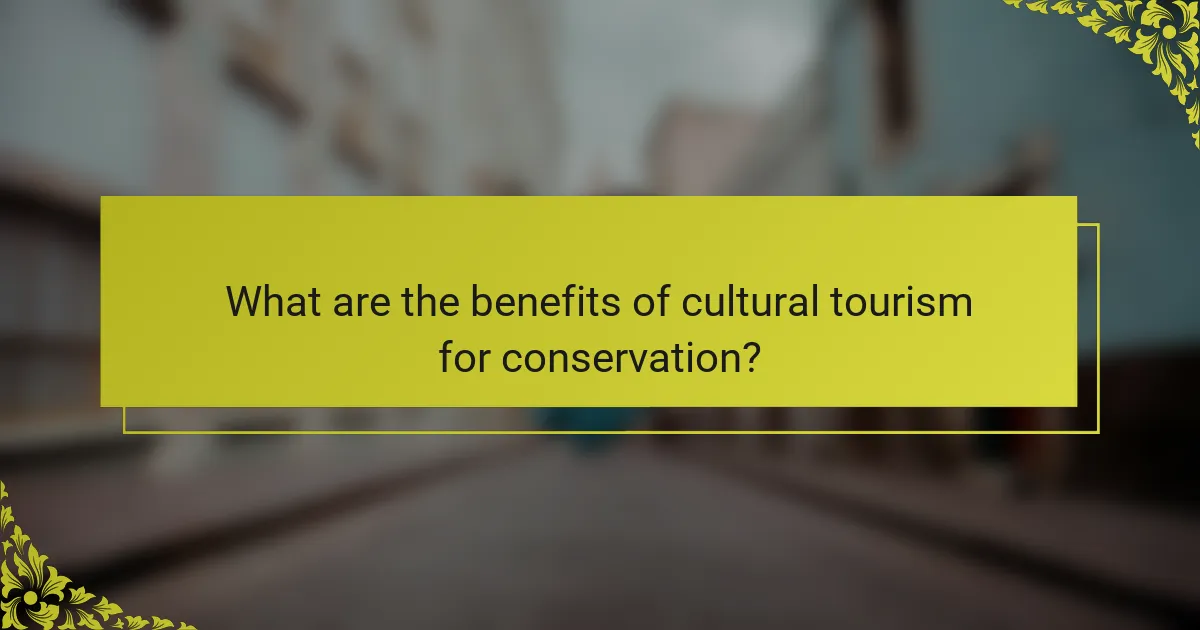
What are the benefits of cultural tourism for conservation?
Cultural tourism significantly enhances conservation efforts in Maasai Mara by promoting awareness and funding. It fosters local community engagement, ensuring that conservation initiatives are sustainable and culturally relevant. Tourists’ financial contributions support wildlife protection and habitat preservation, creating economic incentives for locals to prioritize conservation. Additionally, cultural exchanges between visitors and locals enrich understanding of biodiversity’s importance, reinforcing conservation messages.
How does cultural tourism support local economies?
Cultural tourism in Maasai Mara significantly boosts local economies by creating jobs and generating income. It fosters community development through the promotion of local crafts and traditions.
Tourists engage in wildlife conservation initiatives, which enhance environmental sustainability and ecological awareness. This collaboration leads to increased funding for local conservation projects, further benefiting the community.
Additionally, cultural experiences attract visitors, resulting in higher demand for local services such as hospitality and transportation. As a result, the economic impact of cultural tourism extends beyond immediate financial benefits, contributing to long-term community resilience and growth.
What are the environmental benefits of responsible tourism?
Responsible tourism in Maasai Mara offers significant environmental benefits. It promotes wildlife conservation, supports local communities, and reduces habitat degradation.
By prioritizing sustainable practices, responsible tourism helps maintain biodiversity. Tourists contribute to conservation funding, which protects endangered species and their habitats.
Additionally, responsible tourism encourages eco-friendly initiatives, such as waste reduction and renewable energy use. This approach minimizes the ecological footprint of tourism activities in the region.
Finally, engaging with local cultures fosters environmental awareness among visitors. This cultural exchange enhances appreciation for conservation efforts and motivates sustainable practices.
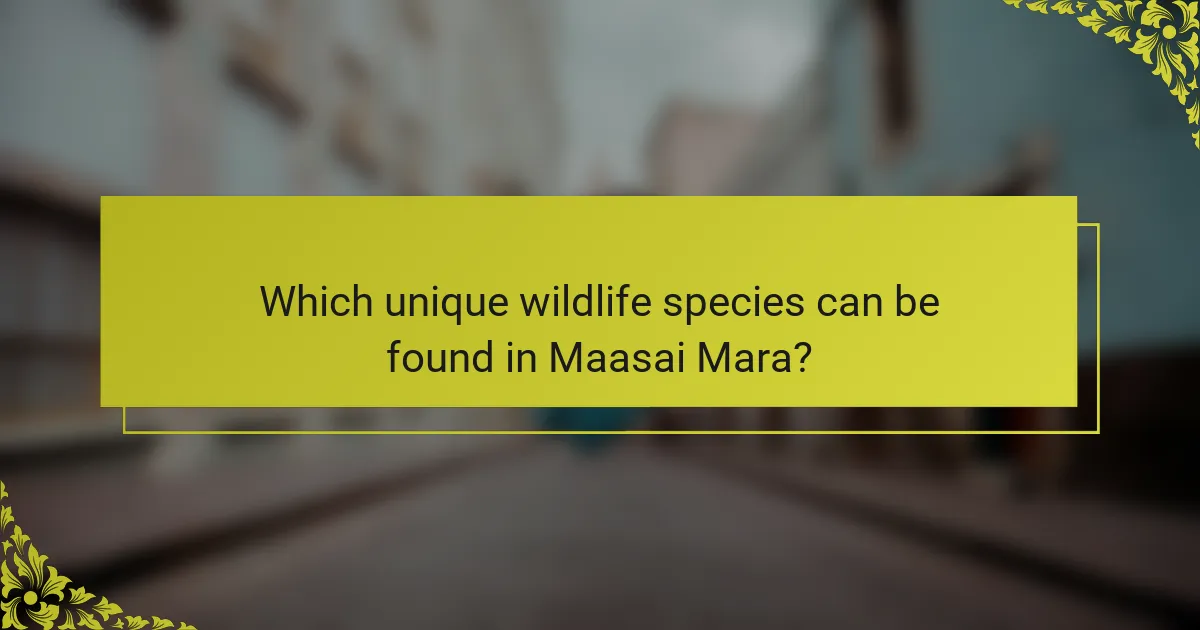
Which unique wildlife species can be found in Maasai Mara?
The Maasai Mara is home to unique wildlife species such as the endangered black rhino, the elusive serval cat, and the rare African wild dog. These species contribute to the region’s rich biodiversity and highlight ongoing conservation efforts. The Maasai Mara’s ecosystem supports over 95 species of mammals, including the iconic big five: lion, elephant, leopard, buffalo, and rhinoceros. Additionally, the region is a critical habitat for over 400 bird species, making it a vital area for wildlife conservation and cultural experiences.
What adaptations do these species have for survival in the ecosystem?
Species in the Maasai Mara have various adaptations for survival, including camouflage, migration, and social structures. Camouflage helps animals like leopards blend into their surroundings, enhancing hunting success. Migration allows species such as wildebeests to find food and water, following seasonal patterns. Social structures, seen in elephants and lions, provide protection and increase hunting efficiency. These adaptations are crucial for thriving in the diverse ecosystem of Maasai Mara.
How do migration patterns affect wildlife conservation strategies?
Migration patterns significantly influence wildlife conservation strategies by dictating habitat protection and resource allocation. Understanding these patterns helps conservationists develop targeted initiatives that align with animal movements. For instance, in the Maasai Mara, seasonal migrations of wildebeest and zebras necessitate conservation efforts that ensure safe corridors and minimize human-wildlife conflict. This strategy not only protects wildlife but also sustains local ecosystems. By integrating cultural experiences with these initiatives, the Maasai Mara enhances community involvement in conservation, fostering a symbiotic relationship between wildlife and local cultures.
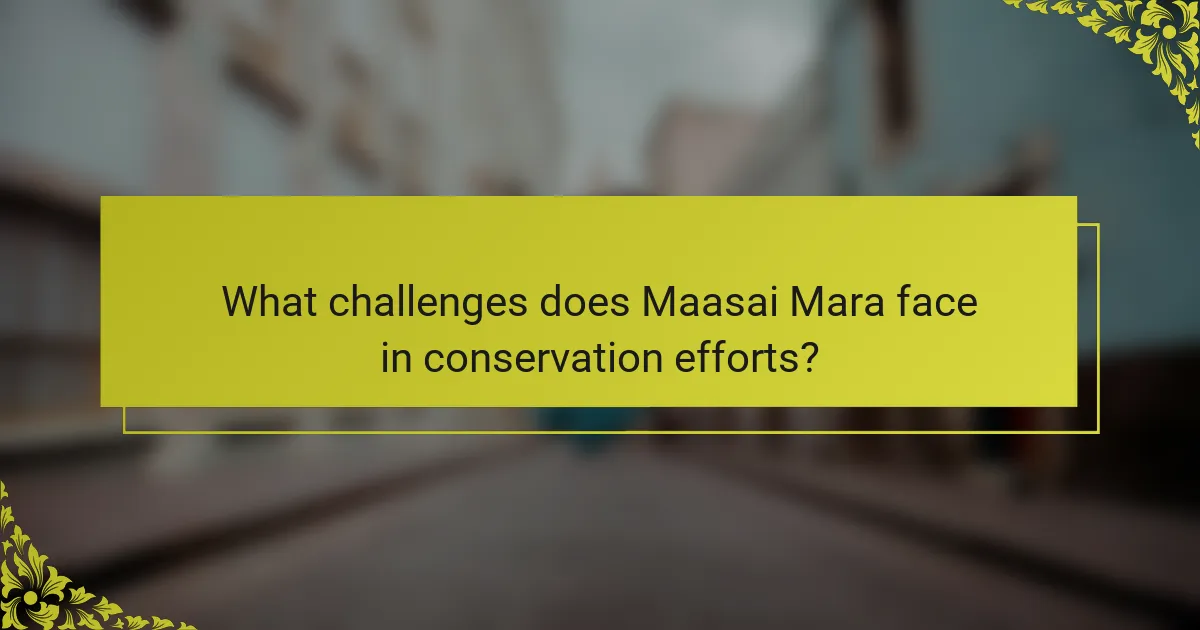
What challenges does Maasai Mara face in conservation efforts?
Maasai Mara faces significant challenges in conservation efforts, including habitat loss, human-wildlife conflict, and climate change. Habitat encroachment from agriculture reduces wildlife space. Human-wildlife conflict arises when animals damage crops or threaten livestock. Climate change alters migration patterns and water availability, impacting both wildlife and local communities. These factors complicate conservation initiatives and threaten the region’s biodiversity.
How does climate change impact wildlife and local communities?
Climate change significantly affects wildlife and local communities in the Maasai Mara. Rising temperatures and altered precipitation patterns threaten animal habitats and food sources. As a result, species migration patterns change, impacting local biodiversity.
Communities face challenges such as reduced water availability and increased human-wildlife conflict. For example, droughts can diminish grazing land for livestock, leading to economic strain. Conservation initiatives aim to mitigate these effects by promoting sustainable practices and protecting habitats.
Cultural experiences tied to wildlife tourism also suffer, as fewer animals may deter visitors. This impacts local economies reliant on tourism. Collaborative efforts between conservationists and communities are essential to adapt to these changes and ensure both wildlife protection and community resilience.
What are the effects of human-wildlife conflict in the region?
Human-wildlife conflict in the Maasai Mara leads to habitat destruction, livestock loss, and negative attitudes towards wildlife. These effects threaten conservation efforts and local livelihoods. For example, increased competition for resources often results in retaliatory killings of predators, disrupting the ecosystem. As a result, conservation initiatives must address these conflicts to promote coexistence and sustainable practices.
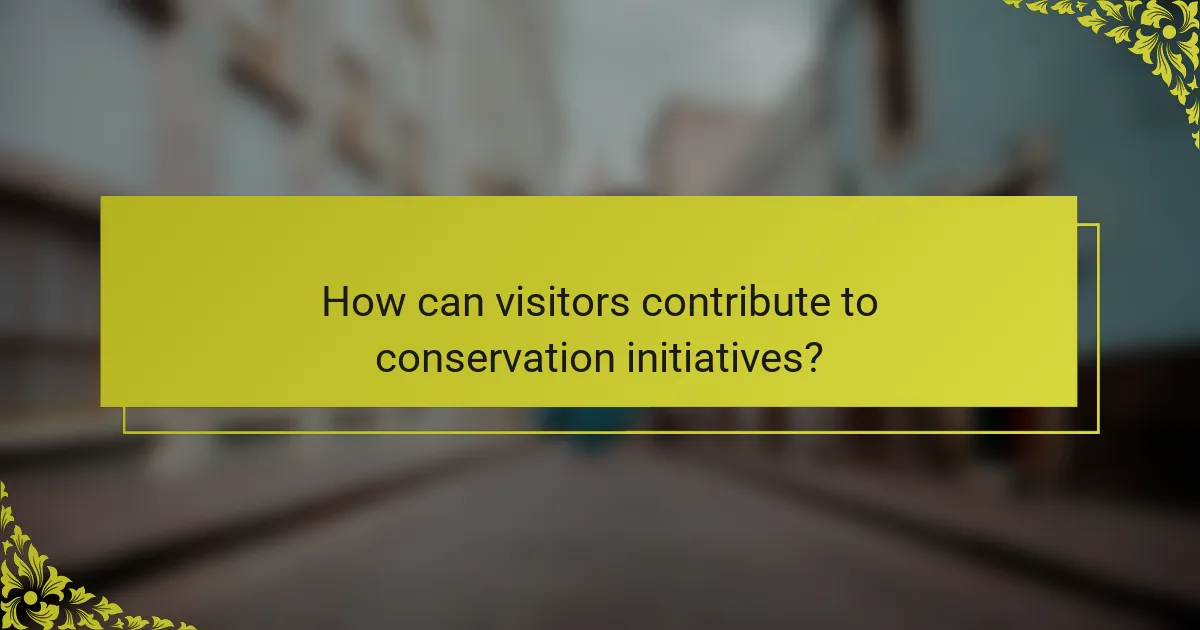
How can visitors contribute to conservation initiatives?
Visitors can significantly contribute to conservation initiatives in Maasai Mara through responsible tourism and direct involvement. By participating in eco-friendly safaris, travelers support local businesses that prioritize wildlife protection. Additionally, visitors can engage in community-led conservation programs, such as tree planting or wildlife monitoring, enhancing local ecosystems. Donations to reputable conservation organizations further amplify these efforts, helping to fund critical projects aimed at preserving the unique biodiversity of the region. Education and advocacy also play vital roles; sharing experiences can raise awareness about conservation challenges and inspire others to take action.
What responsible tourism practices should visitors follow?
Visitors should follow responsible tourism practices to respect the Maasai Mara’s culture and wildlife. Prioritize sustainable activities, support local communities, and minimize environmental impact.
Engage with Maasai guides to learn about their traditions and conservation efforts. Choose eco-friendly accommodations that contribute to wildlife preservation. Avoid littering and stay on designated paths to protect natural habitats.
Participate in community-based tourism initiatives, which provide economic benefits to local residents. Respect wildlife by observing from a distance and never feeding animals.
By adopting these practices, visitors can enhance their experience while contributing to the conservation of the Maasai Mara’s unique ecosystem and cultural heritage.
Which local projects can tourists support directly?
Tourists can support local projects in Maasai Mara by participating in community-based tourism initiatives, wildlife conservation programs, and cultural exchange activities. These projects promote sustainable practices and benefit local communities directly.
1. Community-Based Tourism: Engage with local Maasai communities to experience their culture while contributing to their economic development.
2. Wildlife Conservation Programs: Join efforts to protect endangered species and their habitats through hands-on activities and educational workshops.
3. Cultural Exchange Activities: Participate in traditional ceremonies, art workshops, or cooking classes to learn about Maasai traditions and support local artisans.
4. Eco-Tourism Lodges: Stay at eco-friendly accommodations that reinvest profits into local conservation and community projects.
These initiatives foster a deeper connection between tourists and the Maasai Mara, enhancing both cultural appreciation and wildlife preservation.
What are common mistakes tourists make regarding cultural sensitivity?
Tourists often overlook local customs and traditions, leading to cultural insensitivity. Common mistakes include photographing people without permission, disregarding dress codes during ceremonies, and not understanding the significance of local rituals. These actions can offend the Maasai community and disrupt the cultural experience. Respecting local norms enhances interactions and supports wildlife conservation initiatives.
What expert tips can enhance the Maasai Mara experience while supporting conservation?
To enhance the Maasai Mara experience while supporting conservation, engage with local communities and participate in sustainable tourism. Consider these expert tips:
1. Choose eco-friendly lodges that contribute to conservation efforts.
2. Participate in community-led cultural tours to understand Maasai traditions.
3. Support local artisans by purchasing handmade crafts.
4. Follow guidelines for wildlife viewing to minimize disturbance.
5. Educate yourself on conservation challenges and share knowledge with others.
